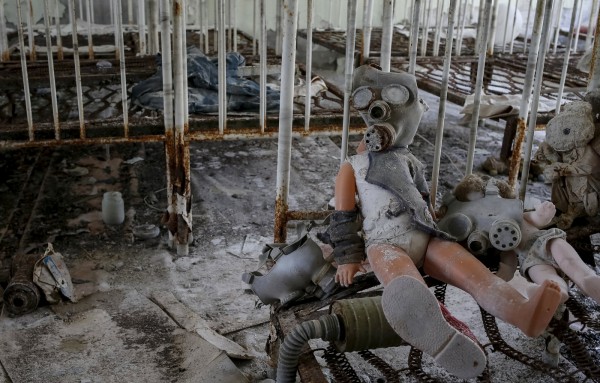What The World Might Look Like After A Nuclear Disaster: Chernobyl 30 Years On

Chernobyl Plus 30: What A Nuclear Disaster Looks Like Three Decades After The Fact
It’s obviously a scenario anyone but a madman would dread: dealing with the aftermath of a nuclear accident. Five years after the Fukushima disaster, scientists are still grappling with the long-term consequences.
But as horrific as that catastrophe was–and will likely continue to be for generations to come–we do have one other extant example of what the world or at least a small part of it might look like in the wake of a nuclear disaster.
It’s been 30 years since the Chernobyl explosion and subsequent fire killed 30 brave rescuers and firefighters, drove away 130,000 area residents and killed countless animals and birds. In the wake of that man-made atrocity, the Russians set up a 2,800-kilometer exclusion zone, and although 300 or so mostly elderly residents have over time crept back in, for the most part the area is free from human influence.
But not so animal life. Radiation levels 10-35 times higher than normal background radiation in the US have kept all but the most stubborn and foolhardy Russians from re-establishing a toehold in the exclusion zone, but the animal life is something we can look at and perhaps imagine what might be the result of a wider-scale nuclear disaster in the absence of humans.
According to biologist Denys Vyshnevskiy who studies life in the exclusion zone, animals there may live for fewer years and produce fewer offspring, but their numbers and varieties are growing at rates unseen since long before the Soviet Union collapsed in 1991.
“Radiation is always here and it has its negative impact, but it is not as significant as the absence of human intervention,” said Vyshnevskiy.
Certainly the make-up of the local fauna changed: in the absence of humans, species that depend on humans in some capacity like pigeons, sparrows and white storks disappeared too. But other animals that had long been driven back by human occupation of the area reappeared, like bears, elk, lynx, wolves, eagles and many more.
One slightly mad experiment saw the introduction of a small group of endangered Dzungarian horses to the area. Today a herd of about 100 flourish there, part of what Vyshnevskiy calls an “environmental renaissance.”
Others urged caution before affixing an “all’s well that ends well” tag to the Chernobyl story however. Other biologists point out that birds and butterflies have largely not returned, and are unlikely to do so because of a chromosome susceptibility.
And of course avoiding nuclear disaster at all costs is preferable. But given the circumstances, Vyshnevskiy prefers to sound a hopeful note: “There is a huge contrast between Chernobyl just before the catastrophe and Chernobyl 30 years after. These animals are probably the only positive outcome of the terrible catastrophe we had.”
http://www.enca.com/life/chernobyl-30-years-after-nuclear-disaster
